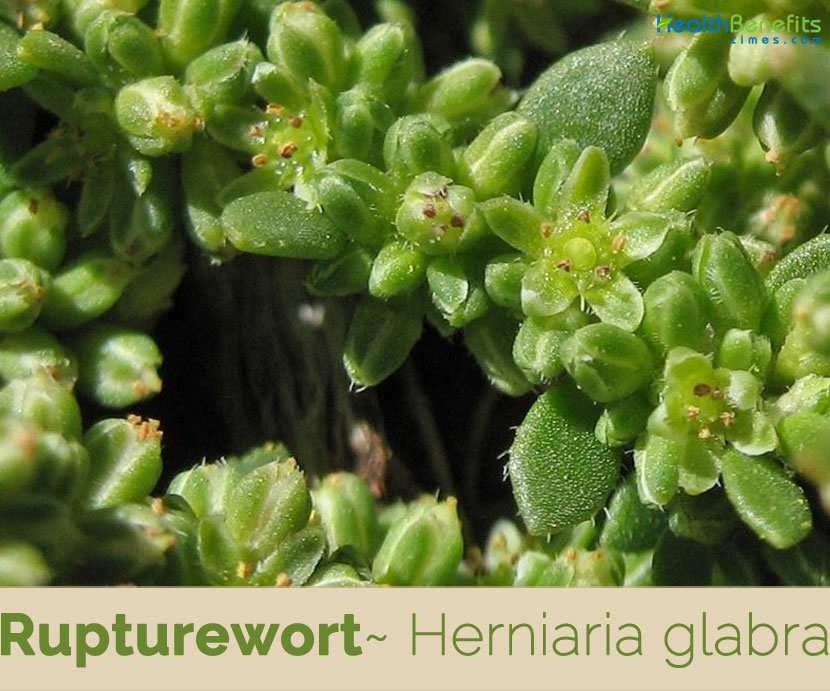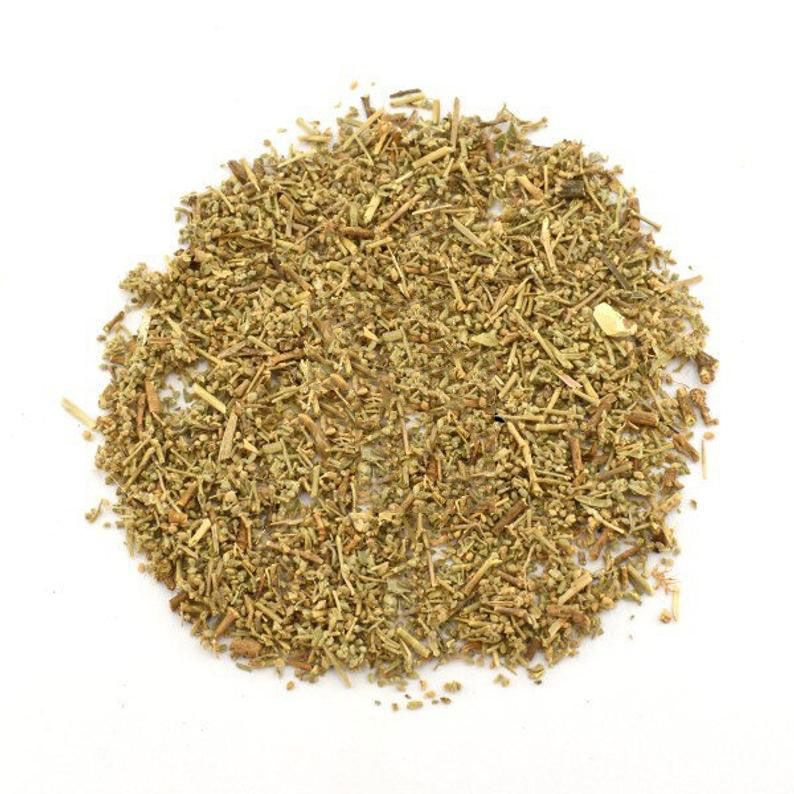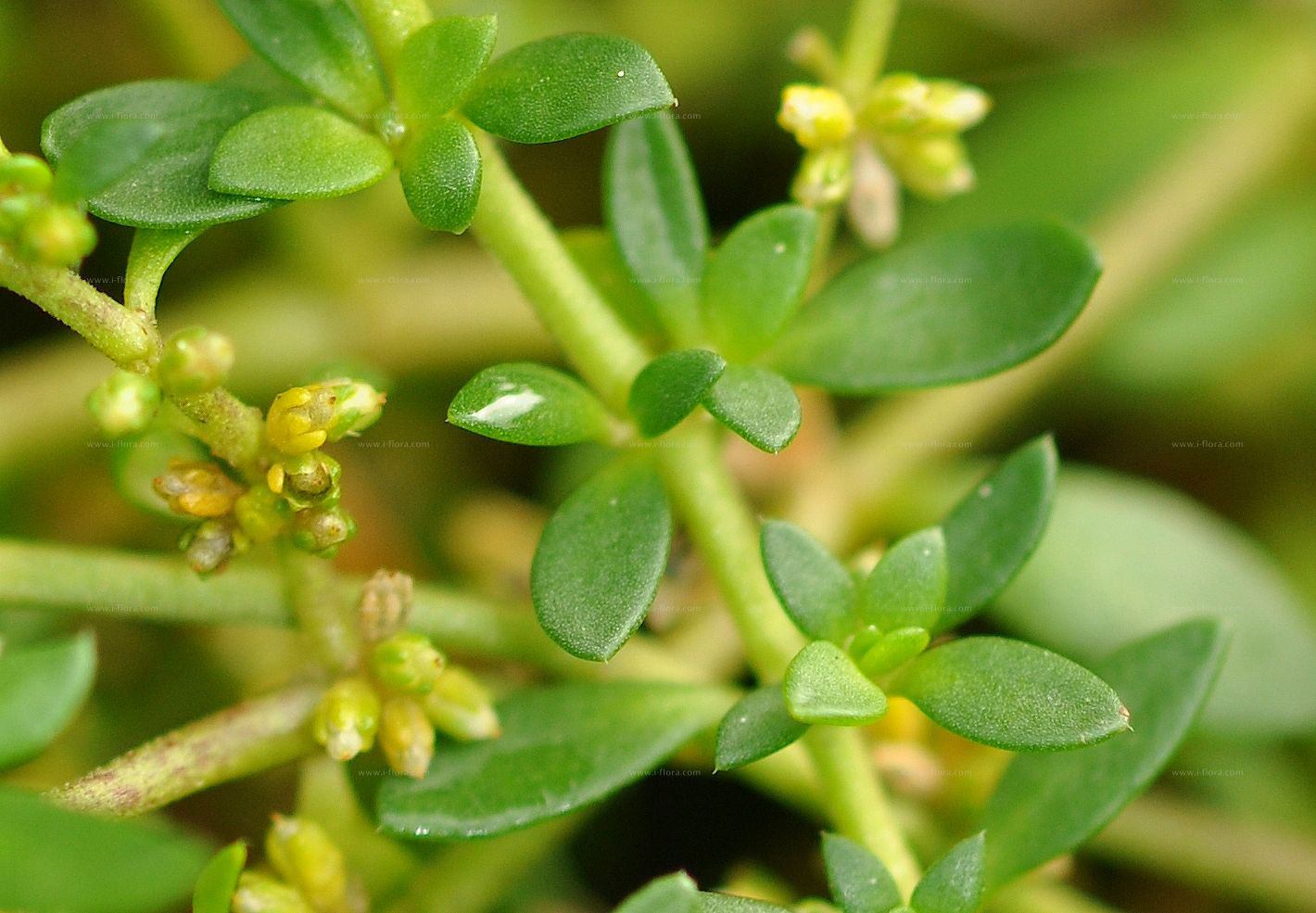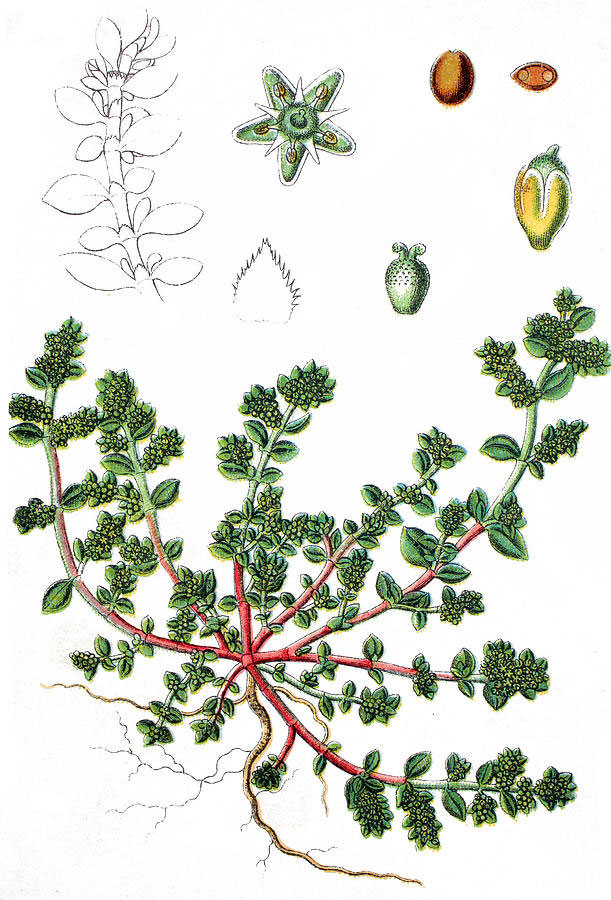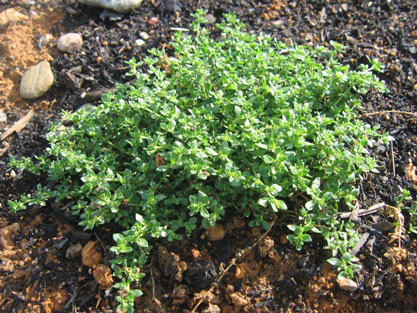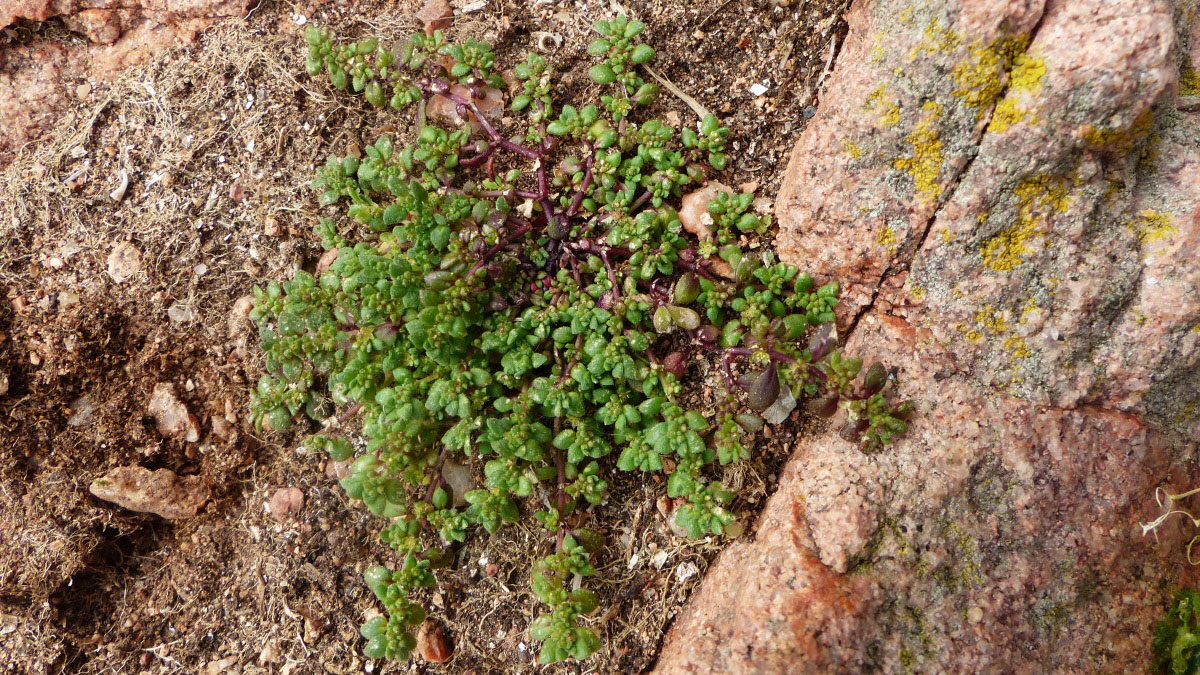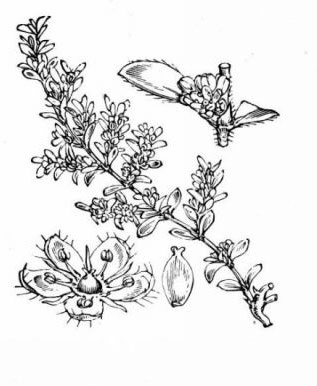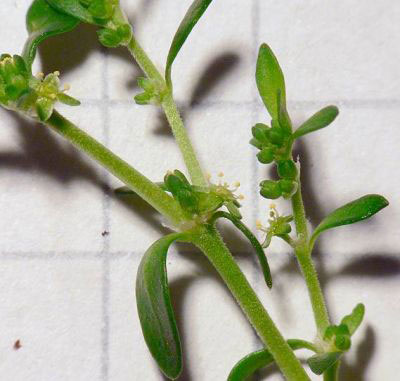| Rupturewort Quick Facts | |
|---|---|
| Name: | Rupturewort |
| Scientific Name: | Herniaria glabra |
| Origin | Africa, Asia, Europe and Northern America |
| Shapes | Egg-shaped, thin-walled achene, slightly longer than calyx |
| Taste | Bitter |
| Health benefits | Beneficial for kidney and bladder stones, gouts, urinary bladder infections, renal disease, diabetes, hernias, hypertension, cardiac decompensation, rheumatism |
| Name | Rupturewort |
|---|---|
| Scientific Name | Herniaria glabra |
| Native | Africa, Asia Europe and Northern America |
| Common Names | Smooth Rupturewort, Bruckkraut, Flax Weed, Herniaire Hirsute, plain Herniary, glabrous rupturewort, Herniary breastwort, Rupturewort, Green carpet, Smooth burstwort |
| Name in Other Languages | Albanian: Herniaria e shogët, herniarie Arabic: Showail Aragonese: Mil en grana Azerbaijani: Çılpaq herniyar Bashkir: Бүҫер үләне Bulgarian: Golo belilo (голо белило), golo izsiplivche (голо изсипливче) Catalan: Herniària vera, cent-en-grana, cent-en-rama, cent-en-rama llisa, granelluda, herba arenària, herba còlica, herba de cent en grana, herba de cent granes, herba de la irritació, herba de la rapa, herba de les dones, herba de les mil granes, herba de mal de pedra, herba de Noé, herba de pedra, herba granària, herba renària, herba turca, herniària, herniària vera, mil granes, milengrana, milgranes, santa en grana, santaengrana, santa-en-grana, santingrana, trenca-pedra, trencapedra granelluda, urinària Chinese: Zhì shàn cǎo Croatian: Gola kilavica Czech: Průtržník lysý Danish: Brodurt, Brudurt Dutch: Breukkruid, kaal breukkruid, Almindelig brudurt English: Glabrous rupturewort, smooth rupturewort, Herniary breastwort, Rupturewort, Smooth rupturewort, Green carpet, Smooth burstwort Estonian: Sööt-reiarohi, Harilik söötreiarohi Finnish: Ketotyräruoho, tyräruoho French: Casse-pierre, herniaire glabre, herniaire vulgaire, herniole, hernière glabre, miligrane, milligrane, turquette, turquette glabre Galician: Coquera, coriña, erva-das-quebraduras, herba do pedreira, herba dos mexos, turca German: Kahles Bruchkraut, kahles Tausendkorn Greek: Erniária (ερνιάρια), erniaría leía (ερνιαρία λεία) Hebrew: Darkanit kerachat, דַּרְכָּנִית קֵרַחַת Hungarian: Kopasz porcika, Porcikafű Italian: Erba turchetta, erniaria, erniaria glabra, erniola Japanese: Kogomebiyu (コゴメビユ) Latvian: Kailā trūkumzālīte Lithuanian: Plikasis skleistenis Majorcan: Herba pixotera, mil en grana, pitxosa, trenca-pedras Norwegian: Brokkurt, Brudgras, Tusind korn Occitan: Erbo de la gravello Persian: علف ترکی Polish: Połonicznik gładki, połonicznik nagi Portuguese: Erva turca, erva-das-quebraduras, erva-herniária, erva-turca, herniaria, herniola, herníola, herva das quebraduras,herva turca, milegrana, turca Romanian: Feciorică, iarbă fecioarelor glabra Russian: Gryzhnik gladkiy (грыжник гладкий) Serbian: Gola priputnitsa (гола припутница), sipanica (сипаница) Slovak: Prietržník holy Slovene: Goli kilavec Spanish, Castillian: Arenal, arenilla, cazapete, ciento en grana, herniaria, cientoengrana, gazapeio, gazapeiro, gazapeos, gazapero, gazapete, gazapeto, gazapote, hierba cólica, hierba de la piedra, hierba del turco, hierba lacólica, hierba turca, manzanilla fuerte, mil en grana, milengrana, millegranos, polígono menor, polígono menor llamado herniaria, yerba del mal de piedra, yerba del turco, yerba golondrina, yerba turca, rompepiedras, sanguinaria Swedish: Knytling, Vanlig knytling Tajik: Alafi gunçişk (Алафи гунҷишк) Turkish: Atyaran Ukrainian: Ostudnyk holyy (остудник голий), ostudnik kotova (остудник котова) Upper Sorbian: Hładka přetoržnička Valencian: Arenària, cent en rama, herba cagadera, herba cagadora, herba d’arenal, herba d’orina, herenària Welsh: Llysiau’r-fors llyfn |
| Plant Growth Habit | Slow-growing, low growing hardy, annual or perennial groundcover |
| Growing Climates | Dry sand fields, sandy hillside ridges, sand pits, roadsides, railway embankments, loading areas, wasteland, forestry rides, golf courses, car parks, disused gravel-pits and disturbed areas in short grassland |
| Soil | Thrives in most soil types, including dry, rocky, poor quality varieties. The only thing it won’t like is one that is overly moist, so the soil should be well-drained |
| Plant Size | Up to 4 cm and spreads easily in all directions, each plant being able to cover up to 2 feet |
| Root | Short and hairy tap roots grow horizontally in all directions, thereby forming flat, circular mats that can be up to 30 cm in diameter and approx. 4 cm in height |
| Stem | Spreading, 5–18[–35] cm, glabrous or thinly pilose, prostrate and very branched |
| Leaf | Leaves are very small, elliptic to lanceolate, sessile ; glabrous or hairy, of a pale green; they stand two at each joint, and are also of a pale green, tinged yellow. Stipules small, ovate, ciliate |
| Flowering season | July to August |
| Flower | Flowers are very small, and yellow, scarcely discernible from the stalks and leaves |
| Fruit Shape & Size | Egg-shaped, thin-walled achene, slightly longer than calyx |
| Seed | Flat-orbicular, 0.5 mm in diameter |
| Taste | Bitter |
| Plant Parts Used | Stems and the Aerial Parts |
| Available Forms | Capsules and liquid extract |
| Season | August |
| Health Benefits |
|
Plant Description
Rupturewort is a slow-growing, low growing hardy, annual or perennial groundcover that normally grows up to 4 cm and spreads easily in all directions, each plant being able to cover up to 2 feet. The plant has short and hairy tap roots that grow horizontally in all directions, thus forming flat, circular mats that can be up to 30 cm in diameter and approx. 4 cm in height. Plant has spreading, 5–18 cm, glabrous or thinly pilose, prostrate and very branched. The plant is found growing in dry sand fields, sandy hillside ridges, sand pits, roadsides, railway embankments, loading areas, wasteland, forestry rides, golf courses, car parks, disused gravel-pits and disturbed areas in short grassland. The plant thrives in most soil types, including dry, rocky, poor quality varieties. The only thing it won’t like is one that is overly moist, so the soil should be well-drained.
Leaves
Leaves are very small, elliptic to lanceolate, sessile; glabrous or hairy, of a pale green; they stand two at each joint, and are also of a pale green, tinged yellow. Stipules are small, ovate, ciliate.
Flower and fruits
Flowers are very small, and yellow, and sit in small clusters in the leaf axils, hardly discernible from the stalks and leaves. The sepals are green and blunt. Flowering normally takes place in between July to August.
Fertile flower are followed by egg-shaped, thin-walled achene, slightly longer than calyx and is found enclosed between the sepals. Seed us flat-orbicular and about 0.5 mm in diameter.
Health benefits of Rupturewort
The majority of the plant’s therapeutic abilities are likely due to the presence of flavonoids and saponins. The plant has diuretic properties as well as anticonvulsive and astringent properties and the ability to disinfect the urinary tract. Listed below are few of the popular health benefits of Rupturewort
1. Urinary Tract Infections
Rupturewort has been used for centuries for medicine and the first mention of its use dates back to the early 1500s when it was used as a natural diuretic to treat urinary tract infections and cystitis. The herb is still used today to treat a range of urinary tract conditions including urethritis, urinary tract infections and cystitis and it has an anti-spasmodic effect on the bladder. It is also used to prevent kidney stones or kidney gravel from forming.
2. Wound Healing
Rupturewort has also been used traditionally to help treat minor wounds and ulcers. Its common name as well as its scientific name Herniaria stem from its purported ability to treat herniated or ruptured skin. Because it has astringent properties, the herb is applied topically in the form of a poultice to help speed up the healing of minor wounds, ulcers and sores.
3. Arthritis and Gout
Rupturewort has also been used to help treat joint conditions like rheumatism and arthritis. Unfortunately, there is no evidence to confirm its efficacy and we are dependent on anecdotal evidence and traditional use.
It is also occasionally used to treat gout possibly because of its purported diuretic ability. Because of its diuretic actions, rupturewort may help flush uric acid and other toxins from the system. It is the build-up of uric acid which causes painful episodes of gout.
Traditional uses and benefits of Rupturewort
- The whole plant, gathered when in flower, is astringent, very actively diuretic and expectorant.
- It appears to have an antispasmodic effect upon the bladder and is used in the treatment of dropsy, catarrh of the bladder, cystitis and kidney stones.
- It has also gained a reputation for treating hernias.
- Externally, it has been used as a poultice to speed the healing of ulcers.
- It is recommended for catarrh of the bladder.
- It was used for centuries as a diuretic agent in the treatment of chronic cystitis and urethritis.
- It was also used traditionally as a treatment for ailments of the upper respiratory tract, arthritis, rheumatism and as a “blood cleansing” agent.
- The plant has a mild anticonvulsive and disinfectant effect on the urinary tract.
- Rupturewort is still used by some herbalist to treat urinary symptoms such as cystitis, urethritis, and to prevent the formation of kidney stones and kidney gravel.
- The herb is occasionally used as a poultice to accelerate healing of sores and wounds because of its astringent properties.
- It has also been used traditionally to treat rheumatism, gout and coughs.
- It is still used in a poultice and applied to the skin to help heal minor wounds and ulcers.
- Drinking a few cups a day may help naturally treat a urinary tract infection.
- Rupturewort is also used to treat nerve pain, arthritis, rheumatism, muscle pain and gout
- The whole plant is also used to make a poultice that is applied externally to heal ulcers.
- The whole herb can be applied topically to help treat minor wounds and ulcers.
- It was used traditionally for the treatment of kidney and bladder stones, gouts, urinary bladder infections, renal disease, diabetes, hernias, hypertension, cardiac decompensation, as well as rheumatism, and was externally applied as an antiseptic and skin emollient.
- It was used traditionally as blood purification, circulatory disorders, vascular disorders, to decrease blood pressure, diuretic, bone and Joint conditions, respiratory conditions and breathing disorders, neuritis, neural catarrh and for urinary tract conditions.
Dosage and Administration
To make a tea for diuretic purposes, one to two grams (one teaspoon) of the herb is added to hot water (not boiling) and allowed to steep for a while. The usual recommended intake is two to three cups a day.
Some commercial products that can be found on the market today and are intended to treat urinary tract infections contain rupturewort.
Other Facts
- A good ground cover plant, allowing spring bulbs to grow through it.
- An aqueous extract of the plant is a hand cleanser, making the skin soft and supple.
- The soft, green leaves produce a musky odor when they are crushed.
Precautions
- Make sure that you speak to your doctor before using rupturewort especially if you are pregnant or suffer from any pre-existing illness.
- Rupturewort may also interact with other medications so it is important to consult your doctor before using the herb.
References:
https://www.itis.gov/servlet/SingleRpt/SingleRpt?search_topic=TSN&search_value=20299#null
https://pfaf.org/user/plant.aspx?latinname=Herniaria+glabra
https://www.cabi.org/isc/datasheet/114771
http://www.floracatalana.net/herniaria-glabra-l
https://www.botanical.com/botanical/mgmh/r/ruptur23.html
https://plants.usda.gov/core/profile?symbol=HEGL8
https://en.wikipedia.org/wiki/Herniaria_glabra
http://www.tn-grin.nat.tn/gringlobal/taxonomydetail.aspx?id=310830
http://www.theplantlist.org/tpl1.1/record/kew-2846931
https://gd.eppo.int/taxon/HEQGL
https://davesgarden.com/guides/pf/go/57384/#b


